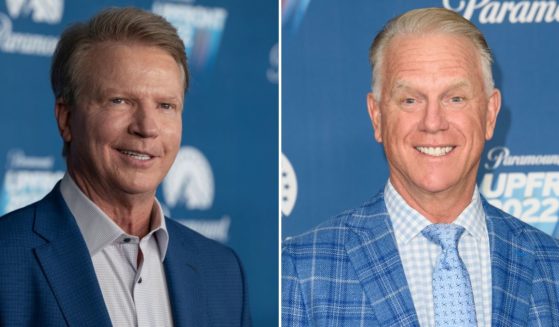The Mythical Modern Audience: 2023 Reports on Streaming, Gaming and Comics Prove the 'Modern Audience' Doesn't Exist
In the wake of America’s Great Reckoning of 2020™, we were promised more diverse, more progressive content was coming from big entertainment.
Movie studios, television networks, gaming developers, even comic-book imprints promised us the wonders of a post-George Floyd society. Diversity riders! Sensitivity reads! Pansexual nonbinary superheroes! Political messaging everywhere! DEI, DEI, DEI!
Assumedly, given the number of people on your Facebook feed who turned their profile-pictures pitch black during the summer of “fiery but mostly peaceful” protests, this should have been enormously popular, right? I mean, we’d all changed. Or so we said we did.
The numbers don’t lie. It turns out we did.
How do we know? Well, the latest set of data proving that this was all a performative charade was a report on the gaming industry from market researcher Newzoo released last week.
While the gaming industry raked in $93.5 billion in revenue in 2023 — an uptick of 2.6 percent — that money wasn’t going to conspicuously woke newer releases like “Alan Wake 2” or “Suicide Squad: Kill the Justice League.”
In fact, over 60 percent of play time was logged by gamers on games that were six or more years old.
The big winner was “Fortnite,” the online battle royale game that was initially released in 2017. Across all four platforms Newzoo monitored — PC, Sony PlayStation, Microsoft Xbox and Nintendo Switch, it was the number one game in every top 10 list.
Furthermore, the platform with the youngest top 10 was the oldest of them all: the Switch, which debuted in 2017. However, its top 10 was heavily skewed by the fact that the No. 2 and 3 games on the list — “The Legend of Zelda: Tears of the Kingdom” and “Super Mario Bros. Wonder” — were both released in 2023. Neither was conspicuously woke, either. Of the games on the Switch top 10 in terms of playtime, the average title was 3.9 years old.
The average Xbox top 10 game was 7.2 years old, the average PlayStation game 7.4 years, and the average PC game 9.6 years.
Furthermore, five titles made up 27 percent of total playtime across all platforms, and none of them were new: “Fortnite,” “Roblox,” “League of Legends,” “Minecraft” and “Grand Theft Auto V.” Of these, “Fortnite” is still the newest — and it debuted nearly seven years ago.
Furthermore, while playtime slowed due to less time at home thanks to pandemic footing finally coming to a blessed end, new releases didn’t move the needle as they would ordinarily be expected to do around the Christmas season.
“Typically, we would expect to see growth in Q4 (as we did in 2022) thanks to holiday releases and more available playtime hours away from work, school, and other commitments,” the Newzoo report stated.
“However, this didn’t come to pass in Q4 2023,” the report read, noting that playtime remained flat.
Now, I did a quick check of my gaming time in 2023 and found that I too played older games — although my tastes were far more esoteric, logging more time than I’d like to admit trying to master the 1989 TurboGrafx-16 title “The Legendary Axe” and the 1993 Sega Genesis classic “Gunstar Heroes.” (I’ve beaten it on hard with 12 out of 16 possible weapons combinations, in case you were wondering. You likely weren’t.) [Ed. Note: I actually was wondering. That’s an impressive feat.]
However, aside from “Tears of the Kingdom,” most of my playtime was spent with older titles, mostly indies, on my computer: Alongside “TOTK” in my personal top five (excluding my excursions into 16-bit land) were the run-and-gun “Cuphead” (2017), Metroidvanias “Dead Cells” (2018) and “Hollow Knight” (2017) and turn-based strategy game “Civilization VI” (2016).
Not that gaming was alone in this trend.
At the movies, 2023 was the year of the “flopbuster,” and the more progressive the themes were, the worse the movie seemed to do. “The Marvels” — the all-female sequel to “Captain Marvel” — became the first film in the Marvel Cinematic Universe not to gross $100 million in U.S. box office. Numerous Disney films with woke messaging either failed or barely broke even at the box office, with the only real breakout success being the decidedly apolitical “Guardians of the Galaxy Vol. 3.”
Other studios suffered similar fates. “Blue Beetle” and “Aquaman: The Lost Kingdom” — two other leaden message-centric superhero movies, this time featuring DC Comics characters — lost staggering amounts of money for Warner Bros. But they had nothing — and I mean nothing — on “The Flash,” which made headlines first because of nonbinary star Ezra Miller becoming the first they/them to take on a major superhero role, and then because of Warner Bros. sticking with Miller despite his multifarious legal troubles.
Estimated box-office loss? A cool $228.7 million. (This is not, presumably, accounting for Miller’s assumedly exorbitant PR and legal fees.) In total, Hollywood lost billions trying to chase woke audiences, all for naught.
But it’s hard to compare new movies to old ones when cinema revivals aren’t quite what they used to be. A better metric might be streaming shows. After all, Netflix, Hulu, HBO Max, Disney+ and whatever new service debuted this week all got bewoked in a hurry after the summer of 2020.
Yet, according to Nielsen data, what were the most streamed shows in 2023?
- “Suits”: 57.7 billion minutes viewed
- “Bluey”: 43.9 billion minutes
- “NCIS”: 39.4 billion minutes
- “Grey’s Anatomy”: 38.6 billion minutes
- “Cocomelon”: 36.3 billion minutes
- “The Big Bang Theory”: 27.8 billion minutes
- “Gilmore Girls”: 25.2 billion minutes
- “Friends”: 25 billion minutes
- “Heartland”: 22.8 billion minutes
- “Supernatural”: 22.8 billion minutes
The only two particularly new shows on there are “Bluey” and “Cocomelon.” Both are kids shows and “Cocomelon” only recently got a woke makeover. “Bluey,” meanwhile, has drawn the ire of the liberal media for not being woke enough because the dad is competent. (No, seriously.)
Every other show on this list not only predates 2020 — that magic demarcation point where everything started becoming ham-fistedly political — but, if its spinoffs were still running past that point, had created the bulk of its content long before The Reckoning™. Even “Gilmore Girls,” which never shied away from its liberal politics, seems quainter than Stars Hollow when compared to Netflix’s “Dear White People” or Apple TV’s “Ted Lasso.” (And I should know, having watched every episode of “Gilmore Girls” except for the rebarbative final broadcast season. The Netflix revival was good, though!)
Keep in mind, too, that “Dear White People” and “Ted Lasso” are among the more commercially and critically successful propaganda pieces on streaming services. That’s hardly a good sign.
And it doesn’t end there. Consider comic books, which were already turning woke long before George Floyd. As Publisher’s Weekly noted, 45 percent of graphic novel sales in 2022 went to translated Japanese Manga, which is decidedly unwoke, compared to just 14 percent for superhero comics.
While Manga tends to be cheaper than comic books, there’s also a higher barrier for entry, given the cultural divide. It’s not just mores, either: Manga is traditionally read from right to left, as opposed to the Western norm of left-to-right.
And while raw U.S. sales income of superhero comics is still higher — $2.075 billion vs. $1.47 billion for Manga — only $435 million of comic book sales came from the monthly issue format. This means a large portion of the superhero comic revenue stream is coming from older comics reissued in digests — in other words, not from modern storylines.
In other words, remember that modern, progressive audience we all thought we’d turned into as a country after The Reckoning™? It turns out it doesn’t exist. It never did. It likely never will. We said and did things to publicly show that we wanted new, woker entertainment to suit the new, woker selves we were putting out in public. In private, we wanted nothing of the sort. In fact, we wanted things to go back to the way they were before progressive entertainment giants cynically saw an opening to start spewing their values directly into our homes.
It didn’t work. And, God willing, it won’t work. Now, it’s time for the real audience to start pushing back on the mythical “modern audience.”
Truth and Accuracy
We are committed to truth and accuracy in all of our journalism. Read our editorial standards.












